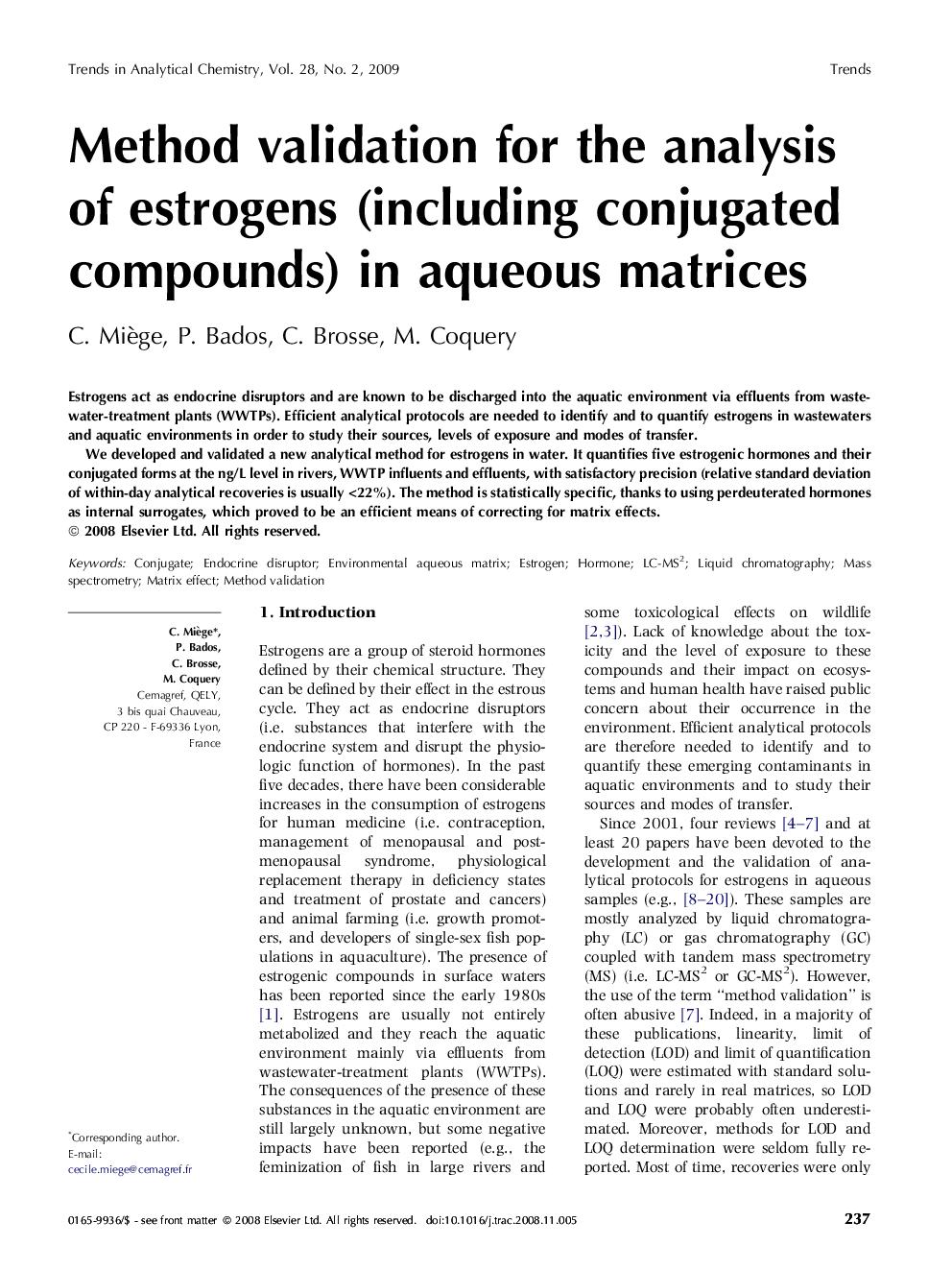| Article ID | Journal | Published Year | Pages | File Type |
|---|---|---|---|---|
| 1248945 | TrAC Trends in Analytical Chemistry | 2009 | 8 Pages |
Estrogens act as endocrine disruptors and are known to be discharged into the aquatic environment via effluents from wastewater-treatment plants (WWTPs). Efficient analytical protocols are needed to identify and to quantify estrogens in wastewaters and aquatic environments in order to study their sources, levels of exposure and modes of transfer.We developed and validated a new analytical method for estrogens in water. It quantifies five estrogenic hormones and their conjugated forms at the ng/L level in rivers, WWTP influents and effluents, with satisfactory precision (relative standard deviation of within-day analytical recoveries is usually <22%). The method is statistically specific, thanks to using perdeuterated hormones as internal surrogates, which proved to be an efficient means of correcting for matrix effects.
